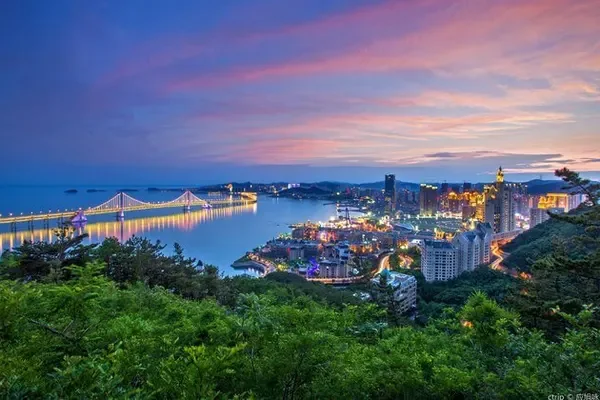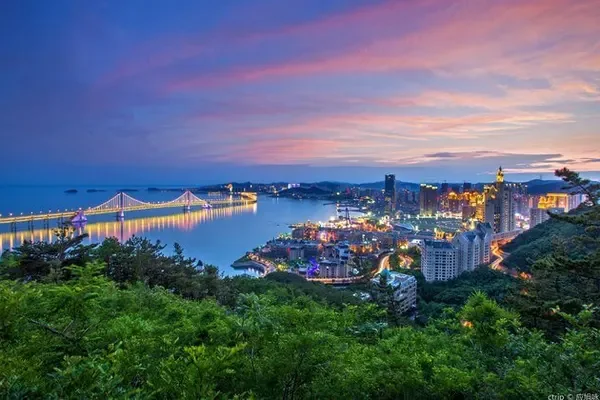December 21 is the winter solstice, and the winter solstice on this day is very rare, because most of them fall on the 22nd. People in the north eat dumplings during the winter solstice. The expectation of this day when I was a child is beyond the comprehension of today’s young people. Naturally, I think of dumplings. When I think about which dumplings are delicious, I think of the beef dumplings in Yongji. Wouldn't it be better if Ji went to see the scenery and have a bowl of the famous beef dumplings.
I took the high-speed rail and arrived at Yongji North Station at 10:42 in the morning. I planned to take the bus to Pujiu Temple. The taxi driver stopped me and told me that the bus was very slow, the travel time was precious, and the meter was not charged randomly. Wait, these words make sense, so I changed my mind and got into a taxi.


It was really fast. I arrived at Pujiu Temple at 11:14, and the taxi fare was 50 yuan.
It can be said that today's Pujiu Temple was completely rebuilt around the story of Wang Shifu's "The West Chamber" in 1986. It is a product of tourism development. The main promotion here is "love", and the atmosphere of Buddhism seems to be lower. In the former Pujiu Temple, only one stupa and Bodhisattva cave remained. The stupa is now renamed "Yingying Pagoda". The name is very strange. I don't know whose idea it was. In short, places with stories are more attractive to tourists, especially young people. Since there are love stories here, it naturally adds charm, and the promotion of tourism products is relatively successful.
The ticket for Pujiu Temple is 50 yuan, and today it is free.






I left Pujiu Temple at 12:50, planning to go to the Guanque Tower. I found the bus stop. There were not many cars. At this time, an old man in his sixties came and recommended his private car to me. It was 15 yuan for a one-way trip and 30 yuan for a round trip Yuan, I thought about it and got into his old car. First of all, we arrived at Puzhou Ferry, which is the Yellow River beach. When there is a lot of water, there are cruise ships. This year, all the water from the Yellow River went to Shaanxi.

After taking a few photos, I boarded the car and went to Guanque Tower.
Now the Guanque Tower is newly built. No one knows where the original site is. It is estimated that it is on the bank of the Yellow River to the west of the ancient city of Puzhou. It may be inside or outside the city. It was a military facility at that time. The Guanque Tower was rebuilt in 1997, and it was opened to the public on the National Day in 2002. The ticket price is 60 yuan, and today it is free.



It can be said that apart from the name, the current Guanque Tower has nothing to do with the original Guanque Tower. This is a new tourist attraction borrowed from the name of "Guoque Tower". The Yellow River flows into the sea. If you want to see a thousand miles, go to a higher level." Coming here is to climb to the top of the building to see the Yellow River. I looked at every floor, and I also focused on his reliefs and plaques around the Guanque Tower, which took 65 minutes.











These have been described in the travel notes of "Pujiu Temple" and "Stork Tower", so I won't repeat them here.
After leaving the scenic spot, I got into the car of the old man and went to the next scenic spot, which is also the Pujin Ferry site that this article focuses on.

Around the Spring and Autumn Period and the Warring States Period, Pujin Ferry was the crossing of the Yellow River, and there was a pontoon bridge, which shows that its status was extremely important. During the reign of Emperor Xuanzong of the Tang Dynasty, Puzhou was designated as the central capital as an important place in the capital, and the pontoon bridge was refurbished and cast. Four iron oxen, four iron men, two iron mountains, four iron piers, and a group of seven-star iron pillars played a very good role in strengthening and protecting the Yellow River Bridge at that time. An iron ox weighed 30 tons, which was quite a large casting project at that time, which shows the advanced level of smelting and casting technology at that time. These iron oxen and iron men still look lifelike and lifelike today, which is very spectacular.





Over the past thousand years, especially after the Jin and Yuan Dynasties, great changes have taken place here. The change of the main channel of the Yellow River made the former pontoon bridge lose its original value, and was finally buried in the ground by sand. It was discovered and excavated in 1989. It was unearthed again, so you can appreciate the glory of Pujin Ferry.
The status of the ancient city of Puzhou is very important, and the city is naturally very prosperous. There is also an important celebrity in Puzhou, that is, Yang Guifei Yang Yuhuan. Whether Yang Yuhuan has brought huge economic benefits to his hometown is unknown without information. It's so presumptuous, if it is today, it will definitely have a great impact.

During the Anti-Japanese War, Puzhou City was still occupied by the enemy. It disappeared completely after the liberation. It was related to the construction of the Sanmenxia Reservoir. It does not hinder the historical value of Puzhou and Pujin Ferry.
The focus of today's heritage park is to see the unearthed cultural relics, the Big Iron Bull and the Big Iron Man, followed by the pontoon bridge attractions built by the scenic spot. These don't take too much time. I rushed around and spent 20 minutes. The ticket here is 50 yuan (low season).














After leaving the Pujin Ferry Ruins, we came to the Puzhou Ancient City Ruins, which are not open at present, mainly the Bell Tower and Dongmen Ruins, and took a few photos nearby.




It was 14:45 when I returned to the Pujiu Temple Bus Station in Xixiang Village. I wanted to take the No. 2 bus to Yongji to eat dumplings. The bus is really slow. There are 28 bus stops within 16 kilometers, especially in Yongji City. I feel that the distance between the stations is only one or two hundred meters.

I asked several people one after another, and they all recommended Liu Jie’s dumplings. After searching the Internet, it turned out that Yongji’s beef dumplings were invented and initiated by this restaurant. Get off at the Department Store Station, and walk for a few minutes to Liu Jie Dumpling Restaurant. There are not many customers at this place. I ordered a beef dumpling. There is no side dish in the stuffing and it is all meat. The taste is really good. After eating, it is 15 o'clock 50. I hurried to the bus station. It takes about one hour and fifty minutes to take the bus to the high-speed rail station. I plan to get on the bus and buy the last high-speed rail.


While waiting for the bus, a taxi came, and I shared a car to the high-speed rail station for 10 yuan, and I got on the bus. It was really fast, and I arrived in about 20 minutes, so I bought a train ticket for more than five o'clock.
Traveling in Yongji on this day, the time was relatively rushed, and the harvest was relatively rich. I learned more about the newly built scenic spots, and the most important thing was to eat authentic Yongji beef dumplings.



